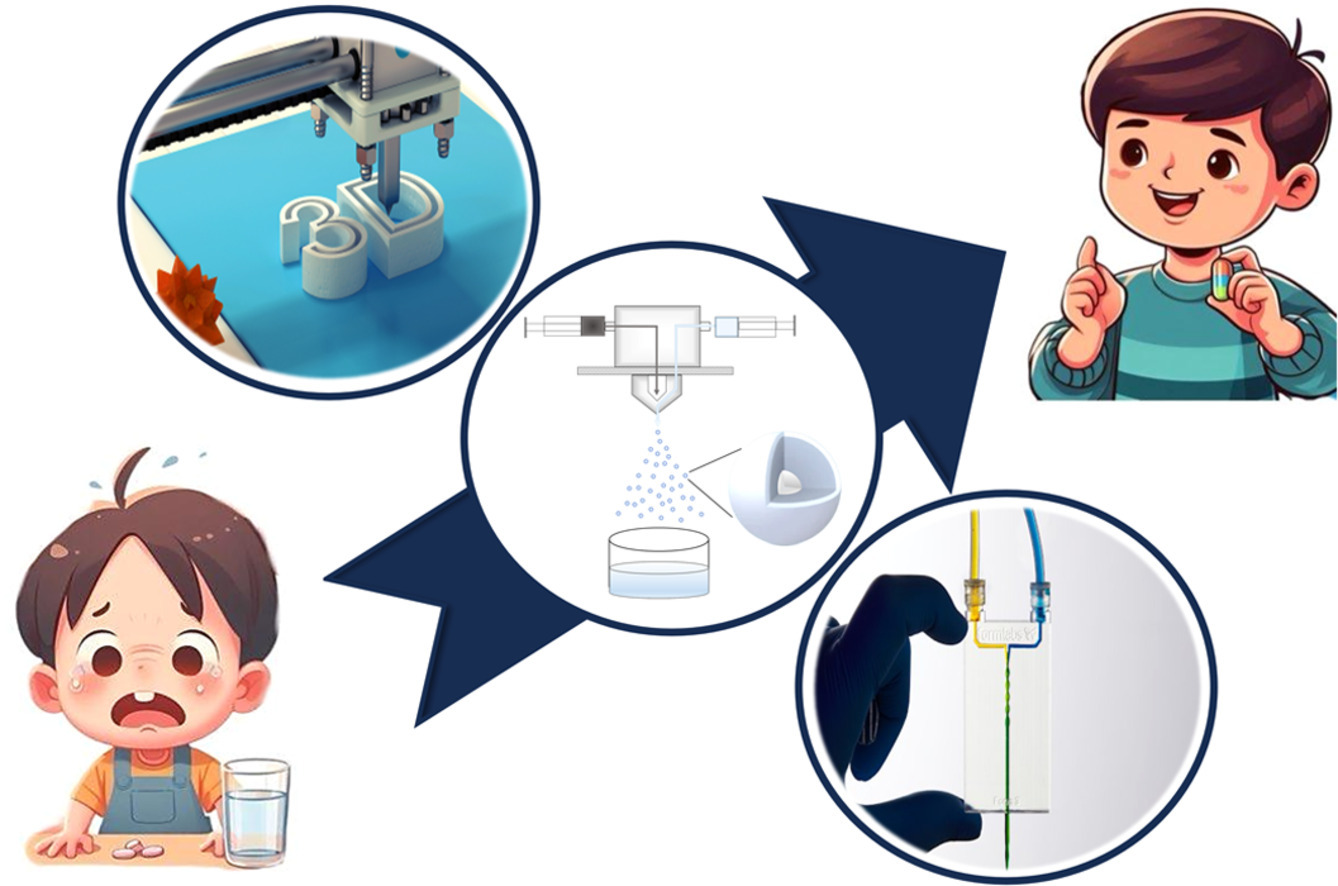Innovative pharmaceutical techniques for Paediatric dosage forms: a systematic review on 3D printing, prilling/vibration and microfluidic platform

The production of paediatric pharmaceutical forms represents a unique challenge within the pharmaceutical industry. The primary goal of these formulations is to ensure therapeutic efficacy, safety, and tolerability in paediatric patients, who have specific physiological needs and characteristics. In recent years, there has been a significant increase in attention towards this area, driven by the need to improve drug administration to children and ensure optimal and specific treatments. Technological innovation has played a crucial role in meeting these requirements, opening new frontiers in the design and production of paediatric pharmaceutical forms. In particular, three emerging technologies have garnered considerable interest and attention within the scientific and industrial community: 3D printing, prilling/vibration, and microfluidics.
HIGHLIGHTS
- The current pharmaceutical forms on the market, intended for the adult population, do not satisfy the needs of the paediatric population. For this reason, new technologies capable of meeting this market demand are to be investigated.
- 3D printing is functional to produce highly customised formulations for paediatric use due to its dimensional and dosage flexibility. Various 3D printing techniques investigated ensure the production of highly customisable pharmaceutical forms.
- The prilling/vibration technique guarantees the production of multiparticulates that are easy to swallow, flexible in the dose and can be administered in a user-friendly manner, making them suitable for the paediatric population.
- Microfluidics is an innovative technique that, due to its advantages, shows potential application to the production of micro-and nanocarriers for paediatric patients.
These technologies offer advanced approaches for the design, production, and customization of paediatric pharmaceutical forms, allowing for more precise dosage modulation, improved solubility, and greater drug acceptability. In this review, we delve into these cutting-edge technologies and their impact on the production of paediatric pharmaceutical forms. We analyse their potential, associated challenges, and recent developments, providing a comprehensive overview of the opportunities that these innovative methodologies offer to the pharmaceutical sector. We examine different pharmaceutical forms generated using these techniques, evaluating their advantages and disadvantages.
Download the full article as PDF here: Innovative pharmaceutical techniques for Paediatric dosage forms
or read it here
Giuseppe Francesco Racaniello, Teresa Silvestri, Monica Pistone, Vita D’Amico, Ilaria Arduino, Nunzio Denora, Angela Assunta Lopedota, Innovative pharmaceutical techniques for Paediatric dosage forms: a systematic review on 3D printing, prilling/vibration and microfluidic platform, Journal of Pharmaceutical Sciences, 2024, ISSN 0022-3549, https://doi.org/10.1016/j.xphs.2024.04.001.
See our next webinar:
“Rethinking the development of controlled release formulations and manufacturing processes”
Date: 30th of April, Time: 3:00 pm (Amsterdam, Berlin)


